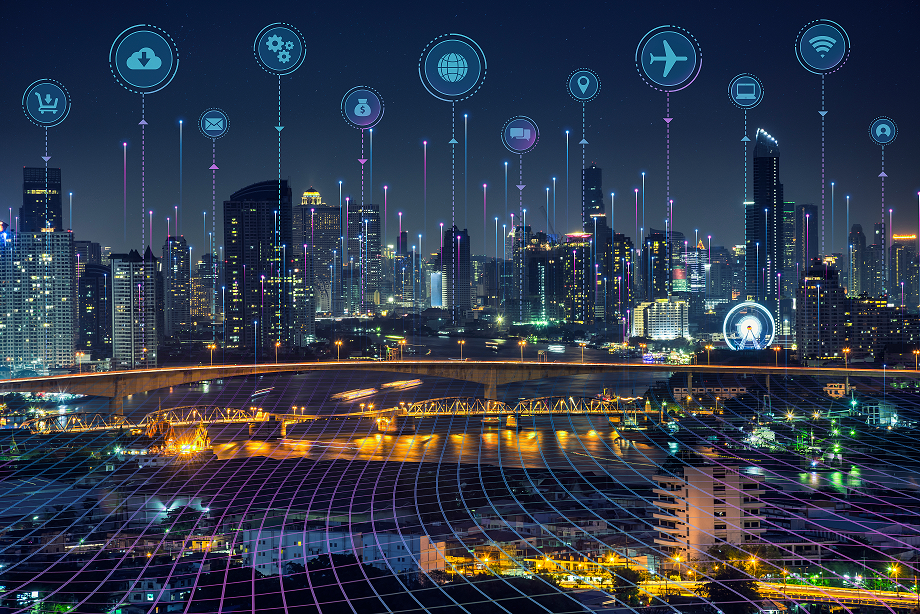Although our current 4G LTE communication network is robust, businesses and consumers quickly outgrow the network and push its limits. Today’s networks are becoming overloaded in major cities, with regular slowdowns occurring at busier times. The rise of internet-connected “smart” devices also drives the need for faster, higher-capacity systems to support the billions of existing devices.
The new fifth generation, or 5G, of broadband looks to address these challenges through even faster and more responsive network access. As the next step in the communications revolution, organizations across industries must reassess how implementing 5G will impact their business. This is especially true for electric utilities and grid operators looking to implement and optimize their smart grid operations. This blog highlights six use cases illustrating how 5G can enable transmission and distribution companies to run more sustainable, resilient, efficient, and cyber-secure operations.

Six 5G application areas for electric utility smart grids
Below are several use cases where 5G implementations can improve electric grid resilience and operational efficiency:
- Real-time monitoring and control – Since 5G allows for ultra-low latency and high bandwidth, real-time monitoring and control of the smart grid can become a reality. The increased power network visibility enabled by monitoring is crucial for managing and optimizing electricity distribution, detecting faults, and quickly responding to emergencies. Power control becomes more precise as smart grid devices and sensors communicate with the central control system in near real-time, facilitating better decision-making and ensuring a more resilient and efficient grid.
When issues arise within the grid, 5G enables smart energy devices to talk to each other for quick and reliable diagnosis and remediation. Power consumers benefit because the enhanced power network stability minimizes the frequency and duration of power outages.
- Grid automation and self-healing – With advanced automation systems, 5G enables faster responses to grid disturbances, faults, or outages through self-healing mechanisms. Automated switches, sensors, and other grid equipment detect and isolate issues, reroute power, and restore service, minimizing downtime and improving the overall reliability of the grid.
- Improved safety for maintenance workers – Across the network of utility substations, the safety of maintenance workers is always a concern. High-speed 5G networks can more rapidly transport data that feeds high-tech cameras and wearable sensors. In this way, information is gathered in real-time to create detailed 3D models that enable maintenance workers to navigate potentially dangerous situations. Maintenance workers can also be tracked and monitored in real-time and quickly warned of imminent dangers.
- Predictive Maintenance – The concept of predictive maintenance is based on the ability to diagnose and fix problems before they result in unanticipated downtime. To make power networks more resilient, utilities must take steps to enable and facilitate predictive maintenance practices. These steps include deploying sensors and IoT devices across the grid, establishing network behavioral parameters and thresholds with software, and analyzing the gathered network performance data using AI algorithms to generate accurate potential downtime predictions. 5G communication helps to speed up these processes so that costly disruptions and downtime are minimized while equipment longevity is enhanced.
- Demand Response and Energy Optimization – Demand/response programs are growing in popularity. 5G facilitates the fast communication needed to send real-time price signals and incentives to energy consumers as they modify their usage during peak demand. 5G-enabled smart meters and devices also provide detailed consumption data, allowing consumers to make informed decisions about their energy usage and save costs. This helps optimize energy distribution and reduce stress on the grid during high-demand periods.
- Distributed Energy Resource (DER) Integration – A bi-directional grid is emerging as more energy consumers become energy producers through the growing use of renewable energy and energy storage. By utilizing 5G connectivity, grid operators can efficiently monitor and control the generation and storage of energy from these decentralized sources. This ensures a smooth integration of renewable energy into the grid, balances supply and demand, and maximizes the utilization of clean energy resources.
5G and edge computing – An ideal partnership
These use cases represent just a few examples of how electric utilities can use 5G to drive operational efficiencies while enhancing power network resilience. Data continuity and reliability are further enhanced when coupled with edge computing, which provides a vital backbone component of 5G networks. Edge computing allows the utility network data coming from different sensors to be processed locally, minimizing latency.
Alerts are only sent to the central control system when there’s a deviation from normal parameters, ensuring efficient grid management. This optimized approach reduces the volume of data transmitted over the network, minimizing data costs and ensuring swift communication. In areas with spotty service, should a 5G network disturbance occur, edge processing continues uninterrupted and sends data once the connection is restored.
Take 5G capabilities further
By partnering with infrastructure and energy management companies like Schneider Electric, electric utility stakeholders can deploy smart grids using a combination of 5G and edge computing systems. To learn more, visit our edge system micro data center and modular data center web pages.
